From magnificent sunsets to incredible sunrises, breath taking views, crazy roads and one hell of an adventure. Zimbabwe is the place to go.
We were initially going to drive through to Martins Drift Border post into Botswana but with it being the start of July school holidays we thought it would be quieter going through Stockpoort instead. We set off early from Nylstroom, Limpopo on the 24 June at 5am and had no problem getting through the Botswana border post. That day we decided to travel through to Elephant Sands in Nata, a distance of 761km.
We arrived at Elephant Sands roughly 4:30pm and were welcomed by elephants a plenty!
Elephant Sands is a great stop over and reasonably priced at P185pp/pn camping.
The next day we set off 188km to the Pandamantenga border into Zimbabwe. It was extremely pleasant experience.
Border Crossing into Zimbabwe
There are many conflicting stories when it comes to crossing over into Zimbabwe. Its actually a very easy process. I would advise to register online for your TIP (Temporary import permit for your vehicle) . It can be done through the following online address etip You will receive a pin on your cell phone and you will use this at the border crossing. TIP costs $50 and you will get your TIP paper which you will need to exit Zimbabwe.
We had no issues with extra fuel but it must be carried in Metal cans and not plastic.
You will also need yellow reflective stickers around your vehicle especially if you are towing.
Food and drink was not an issue either although if you are entering some parks no citrus food is allowed.
Getting to Hwange
Upon entering the Pandamantenga border we followed the gravel road right to Robins camp. The road is clearly marked with Robins Camp sign boards. The gravel road was not bad at all and we arrived with good time to spare. We even spotted Roan antelope along the way.
As we arrived we were blown away by Robins. Incredibly neat, tidy and very accommodating. After checking in we proceeded to the Zimbabwe Parks office to pay for our day / vehicle fees for Hwange National Park. $15 p/p per day and Vehicle $10 p/d. Robins Camp has been upgraded and the campsite was immaculate and the ablutions clean with great pressure in the taps and hot water.
It is advisable to download and print your own map of Hwange as well as to make sure your GPS is up to date. The gravel roads within the park were not great and need some work. We had fantastic sightings at Masuma of elephant, lion, hippo, kudu, waterbuck and impala. There is a lovely thatched lapa to sit under and enjoy your soundings.
We spent 3 days in Robins camp then one night in a picnic site called Mandavu. Its was a bit costly at $50 p/p and $3 per vehicle but absolutely worth it! What an incredibly beautiful place to stay over night. We had lions roaring form all directions. Elephants trumpeting and hippos signing their chorus at night. Sitting at the view point at Mandavu was like receiving a reset on life. This site is a must!

After a memorable night we left at 7am for Sinamatela camp and gate. Our destination for that day was Binga. It was disheartening to see a once beautiful camp in absolute disarray. We walked to the look out point where a bar used to be and it was just an empty shell of a building. After spending a few minutes there we carried on through the gate on our way to the turn off to Hwange.
The roads were quite corrugated but manageable. A few kilometres after leaving the main gate and before a sort of by-pass to Hwange town we came across what looked like a mine that was no longer in operation.
As you pass this you turn left then right into what looks like a mining area. Everything is covered in what looks like coal. The roads, bushes, hills, everything is black! The extent at which the mining was taking place left us a bit speechless. The road was busy as well and took a lot of concentration to get through. Once we reached the T-Junction we turned right towards Dinde no the A8. At Dingavivi we turned left towards Binga on a road that was ok to begin with then the last 20Km was ABSOLUTE HELL! There was no avoiding the potholes into Binga. The last 5km into Binga there was only a small portion of tar left. All in all it was 137km for the Dingavivi turnoff. Thank god for sports bras.
Fuel and supplies
There are no shops for supplies in Binga. You will find a small fruit and vegetable stands in the centre of town and one or two bottle stores that are expensive. When it comes to SIM cards, we were able to get Econet which apparently is one of the best for wide range of places we were going. It cost $10 for the sim and 6Gigs of data.
Fuel wise, there were a few petrol stations in and around Binga but only deal in cash.
We stayed over in Binga Rest Camp.
@ $5 p/p/pn. The ablutions were clean and the shower was warm as the water comes directly from the hot spring. The camp site was basic and lots of shade to park under. the best part it was quiet at night.
The next day we set off early towards Matusadona where we had booked Tashinga camp for a few days.
The Road to Matusadona
Oh lord, that's all I can say! 234km of pain stakingly slow awful road! Eroded dirt road weaving around some washed away bridges and the quicker parts were corrugated or very stoney. It took us in total 8 hours to reach Tashinga. From Binga we went to Siabuwa then on to Siyakobvu ( your GPS should pick up Chief Nebiris Village). There you will turn right down this gravel road. Keep going, you may think you are on a road to nowhere but persevere! We traveled down the mountain pass into this valley and what incredible scenery ! The turn to your left is marked on a wooden board with Matusadona on it. The road was incredibly slow going. With only 30Km to go we saw the most terrifying creature that was dreaded by all! All it wanted was to get into our vehicle! The TSETSE FLY! That is when I took out my magic mix that I made. Baby oil, Lavender, detol mixed together. They apparently don't like it. Out came the spray bottle and I covered myself and Bugs in this oily mix. Good heavens alive what an intoxicating awful throat closing smell! I think I was too heavy handed with Lavender. I swear that is worked. Bugs on the other hand, well lets just say bugs are attracted to Bugs.
Tashinga
We drove straight into Tashinga campsite and I Cannot begin to express how utterly beautiful it is. We were the only vehicles int he whole reserve. We were met by the camp grounds attendant who gave us indemnity forms to sign. We also asked if we can get some fishing done. He was very enthusiastic and so happy to see us. That really makes a difference when arriving at a place and created with such a friendly smile. He told us to [park wherever we liked and would get us some firewood and that he will get the head guide to come and see us to arrange some fishing.
True to his word 30minutes later Madison who was a guide that came to greet us. He was also incredibly friendly and made us feel very welcome! He arranged our fishing boat for the next day after 2pm.
 |
| Sunset |
That evening we had the most incredible sunset over lake Kariba. What an end to a day and so worth the 8hrs to get there. These evenings we spent watching the sunrise and sunsets reminded us of what a very good friend of our and also an incurable man, Johan Oelefse said to us. in his life he was blessed with many beautiful sunrises and sunsets.
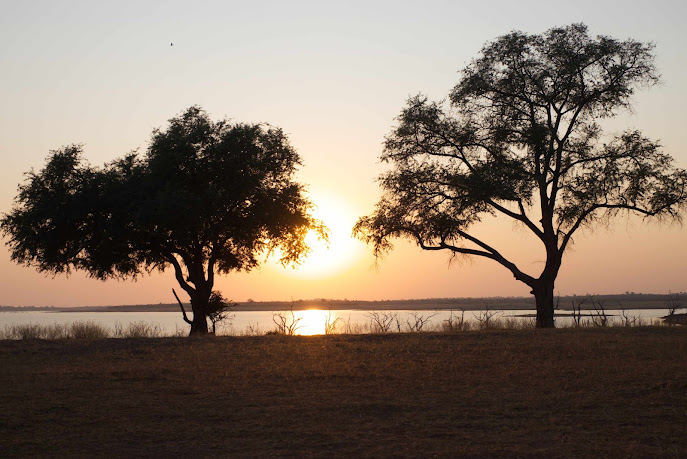 |
| Sunrise |
On all our trips we try and find as many bird species as possible. This time we tried for 200 in total but managed to get to 160 species. The time of year also plays a role in which species you find in a particular place. Most of the migratory birds had left. At lunch time we were greeted by the new reserve Manager who came to see if we were all doing ok. He also suggested that on our last night we wild camp in one of the areas he loves. It would also cut our travel time out the park by 30km.
Fishing Adventure $20 p/ p
That afternoon Madison came to fetch us and take us to our boat. It was a short drive to where we got onto the boat and set off to catch some tigers! Madison was a keen fisherman himself with many years behind him. He was also a very keen birder. I seemed to have all the luck I hooked 2 tigers. One got away and one I caught.
That evening we had another beautiful sunset and ended the day with a lovely camp fire in Bugs Brazier.
The camp at Tashinga is incredibly neat and tidy. The ablution blocks are also clean with running hot water. There are tented camps situated under large trees that have the parrots nesting in. All in all it is one hell of a beautiful camp. It is well worth the visit.  On our last day we set off for a night of wild camping at Maronga. Its about 37km on your way out of the park. It makes it a lot easier to travel the next day.
On our last day we set off for a night of wild camping at Maronga. Its about 37km on your way out of the park. It makes it a lot easier to travel the next day. When we reach the campsite we were greeted by a committee of hooded vultures. We decided to go an investigate as we were told that 2 male lions (one had been collared) were in the area. As we approached the the tree that the vultures in we saw a lion lying on the back fast asleep. when we edged forward we saw a bloated hippo in the water with another lion close by. There were massive crocodiles inside the carcass eating away. We stayed and watched for a while and one of the lions got up and to our surprised got into the water and began easting on the hippo! It has to be one of the best sightings I have ever witnessed.
That night the lions were around our camp roaring. It was a sound that seemed to go straight through you. This is what Africa is all about! What a unforgettable end to our time spent in Matusadona National Park. This is truly a hidden gem in Zimbabwe and definitely should be on your to-do list!
On the road to Kariba
Our next stage of our journey we took the power line road from Matusadona to Kariba. We were told that using this route is much quicker. 210Km stretch took us another 8hours. This was one of the most scenic routes but the road was very bad. We booked in at Lomagundi Lakeside Resort. There rates are as follows:
Per roof top tent $40, per trailer $40 and $10 per person.
Supplies in Kariba
As you enter Kariba you will find TM Supermarket which is Pick n Pay. You pay in USD and its not cheap, but their prices are in Zimbabwean dollars, which makes it confusing to calculate. Take cash as their network is often offline. You will find your basics there. They are very friendly and willing to assist in any way.Fuel again take cash. There are no card facilities.
Kariba Town
Kariba town itself has elephant and zebra walking through town. What is incredible is to see people walking past the elephants which totally ignore them. At Lomagundi they have buffalo, hippo, zebra and sometimes lions in the resort.
I would highly recommend you take a drive to the Kariba dam wall look out point. Its very interesting and there is a tourism shop at the look out that gives the complete history on how the Lake was constructed and why. It is the largest man made Lake in the world The dam stands 128 meters long and extends for 280km and holds 185 cubic kilometres of water.
You may also like to go to the border post at the dam wall that connects Zimbabwe to Zambia and ask for a pass to drive over the bridge and back. If you are wanting to do this make sure you have your passports with.
Nyami Nyami River God - Lake Kariba
African mythology of the local Tonga tribe of the Zambezi Valley states that Nyami Nyami the River God who lives in Lake Kariba is believed to be a serpent-like creature. He is said to be about three metres wide, but nobody dares to guess at his length.
Legends has it that the water stains red when he swims past. Chief Sampakaruma saw him on two occasions many years ago, but the river god has been in hiding since the white men arrived in the country.
According to African mythology he lived under a large rock close to the present day Kariba dam wall. No tribesman would venture near it those few who did were sucked down with their canoes in the whirlpools and never seen again. They called the rock Kariwa, the "trap" and hence the name of the lake, Kariba.
The rising water of lake Kariba covered the rock Kariwa and it now lies 30 metres below the surface annoying Nyami Nyami. The Tonga people also believe that Nyami Nyami is married and that the building of Kariba Dam wall would separate him from his wife, this would anger him greatly and the river god threatened the peace of the valley - Victoria Falls guide

During our short stay in Kariba We decided to try Kapemta for the first time. Oh my goodness was it good! Especially with a local Zimbabwe sauce called Croc Sauce Not So Hot!
The Tsetse Fly ControlDuring our trip through Zimbabwe we had the pleasure of encountering two Tsetse fly controls. The gentlemen where very kind and when one saw I was doing my own Tsetse control he was very proud and waved us on
The final leg of our self tour - Mana Pools
We set off from Kariba town to Mana pools on the M15 to Makuti approximately 79Km. At Makuti you turn left on the A1 towards Marongora Zimbabwe Parks Office. You must check in there prior to going to Mana Pools. At the Parks offices you will full in a book with your particulars and given a gate permit. From there we proceeded to the entry gate(Remember to keep your gate permit as you will need it to leave Mana Pools).
Our journey continued on a badly corrugated gravel road but I must say I thought we had seen some big Baobabs in Angola but these were GIANTS! To me a Baobab symbolised Africa. We arrived around 2pm In Mana Pools and checkin and then proceeded to go to our campsite, BBC. All I can say is that it is incredibly beautiful ! A huge campsite all to ourselves.
No sooner had we packed out the chairs and table we had some visitors! I have to say, we have been to many wildlife parks and I have never seen elephants so calm and at peace with people except maybe in Addo Elephant Park in South Africa. After a long journey to get to Mana Pools it was really theoraputic just sitting back and relaxing while watching these gentle giants walk past.
We had the most incredible sightings during our stay at Mana Pools including seeing the Levaillant's Cisticola. If you are like driving around, then the loop around Chine Pool to Lungfish Pan and then across the road to Long Pool is good for birding and buffalo, waterbuck, hippo and crocs. There is also a variety of storks to look out for such as the Openbill, Saddel-billed and Yellow-billed storks around those areas. We managed to find a long-toed Lapwing at the pool that is one the River Road towards BBC campsite.

If you are eager fishing enthusiasts like ourselves you can by a fishing permit form the offices at Mana it costs $10 per person per day. When we weren't trying to catch some tigers we sat at waterholes and waited to see what would come in. Buffalo were frequent at Chine Pool and did not seem phased with people. On one of our drives we spotted some lions just past Long Pool doing what lions do best, lazing around sleeping.
What was really a fantastic experience was watching the Quelia at our campsite just before dusk flying around. If you are an eager photographer the lighting and dust behind the trees makes it extra special to capture the Quelia in flight.
Mana Pools is a special place I cannot put into words how incredible it is. Yet again the beautiful sunrise and sunsets as well as how the elephants walk in-between the vehicles not a care in world makes Mana Pools one of those places that you will fall involve with and keep going back.
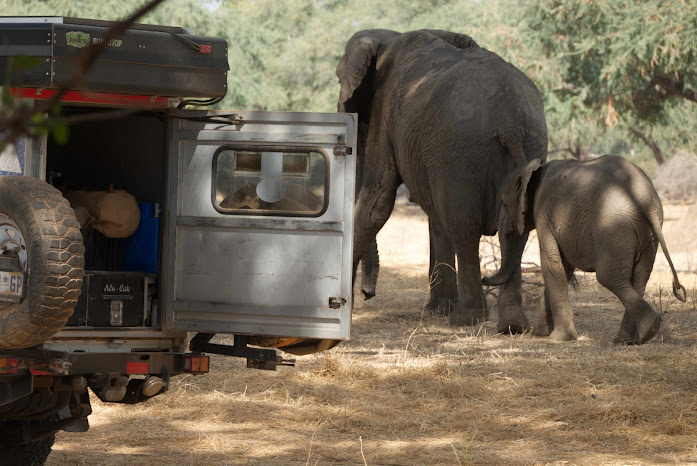
Chitake Springs
Next it was on to Chitake Springs! I cannot put into words what Chitake is like. The campsite 1 is set in such a spectacular place and the wildlife is incredibly wild an on edge.
In our area there where apparently two prides of lions one with 8 and another of 12 with cubs. They roared every night starting at dusk right through to sunrise.
We also had a spotted hyena that adopted us at our campsite and slept near to us. He wasn't much of a bother at all although you had to keep an eye on where he was. At night we had elephants walking past the river bed on the way to springs.
Doing game drives at Chitake is pointless as there isn't really anywhere to go. Where all the action is, is at the look out point near campsite 2. There you take your coffee, snacks and chairs and sit quietly and patiently wait for the action to begin. I do have to stress that the wildlife is extremely on edge from all the predation going on around the springs. Any movement or noise will spoil your chance of seeing anything.
On our first day we were lucky enough to catch lions mating.
Then we hit the jackpot, Buffalo. You see the dust first then you hear the bull in the front bellow and then nothing, not a sound. We all sat so quietly and didn't move an inch. The buffalo was at the top of the hill just waiting. It took 2 hours for him to be pushed from behind by the increasing herd. Finally he wanted down. I cannot begin to explain to you what it sounded like. The thudding of hoofs on the sand was so loud and the dust! The dust was everywhere. This is why we came to Chitake in the first place. These herds of buffalo are legendary.


The first herd that came in to drink was about 100 strong. They didn't stay for long and the back stragglers didn't even get to drink. These buffalo only drank for a second and raced back up the hill. To our surprise the two lions took charged but it didn't' look like they were really interested in a meal. The male lion got himself count in the middle of the herd and was pushed back into the thick bush. After a while the buffalo turned and left.
Over the next few days we had fantastic sightings of Buffalo and lion as well as Baboons, mongoose, impala, white-headed Vulture and many lovebirds. Chitake truly is a special place on earth!
Homeward bound
Our trip home saw us leaving Chitake at day break. At the gate out they ask for your gate pass and sometimes your permits. remember to keep those on you at all times.
From Mana pools turn off we went back through Makuti towards Chinhoy. The road is very busy with trucks. From Chinhoy we turned right down a gravel road towards Chegutu. The road was about 93km wasn't too bad. At Chegutu we went towards Gweru. From Gweru we were supposed to travel straight down the A18 but after about 40km our GPS told us to turn left. DON'T DO IT! What a horrific road. We honestly thought our vehicles were going to break in half. At some point we stopped to look for an exit route and saw it was about 5km ahead of us. As we got the the junction the road became like a highway! There was a road block just ahead of us and the policemen was very helpful and had a giggle that we had actually traveled this road. He did tell us to carry on going as the road is now tarred all the way through to Ngomanuru. When we reach Ngomanuru we continued straight on the A4 towards Beit bridge. We did this in one day and we reached Beit Bridge just after 7pm.
Beit Bridge
I must say Bugs said he may do Beit again but I'm not so sure. Zimbabwe side was very efficient. Everything is now computerised. The only problem is you pay $27 to use the border post and a further $9 to pass over the bridge.
When we got to the South African side it was chaos. It was time consuming and not pleasant at all. Nothing is marked as to where you stand and the process to follow. Busses where parked all over the exit so you couldn't get through.
Was it worth standing at the SA side for nearly 2 hours? Im not convinced. We arrived home the next day just after 11am and collapsed! What an incredible journey it was.
See you on our next adventure !
Bugs and Pam













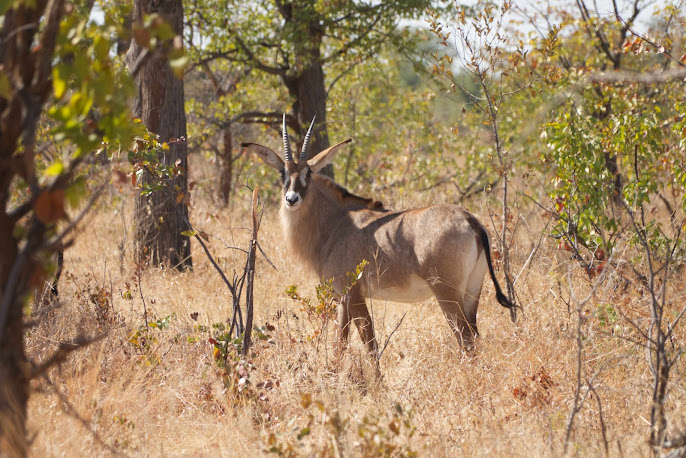


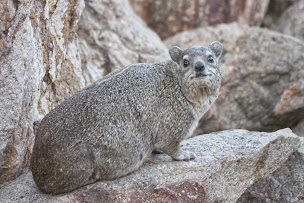

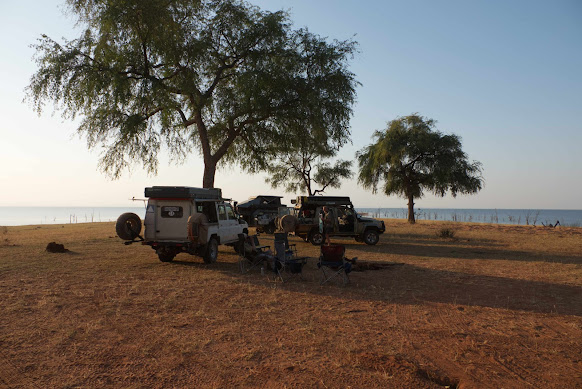







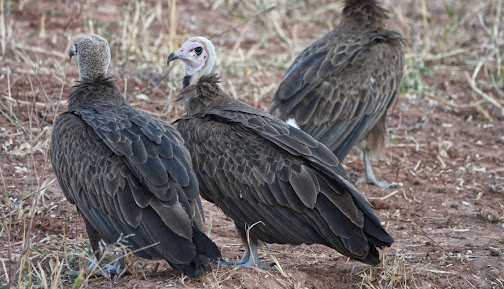















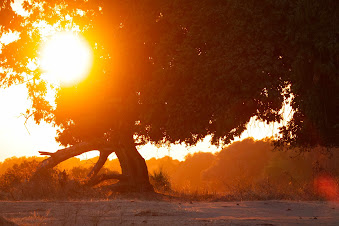








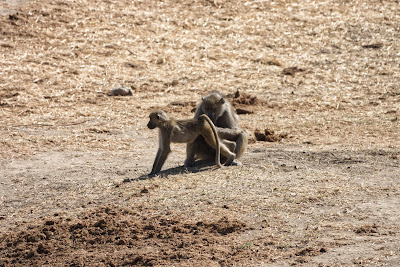
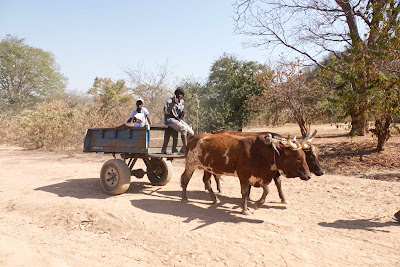





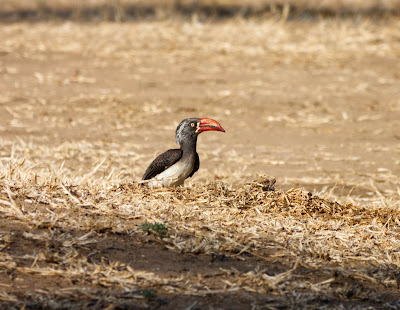











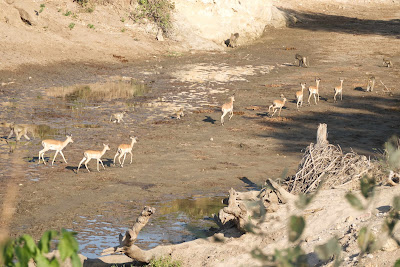


Comments
Post a Comment